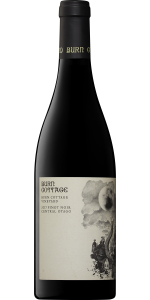
Description
Bright lifted red fruit notes complement darker savoury earth tones along with spice, a touch of chocolate and subtle blood orange nuances. The palate is generous and complex, focused throughout by a mineral freshness and energy, and supported by lovely acidity with persistence of fine textural tannins. A wine that will continue to gain complexity, and a we expect a cellaring potential of 10+ years.
Certifications
Alcohol
13.5%
Vineyard
Climate Continental climate marked by hot summers and cold winters. There is a classic diurnal shift in temperatures between day and night during the growing season that retains bright acidity whilst ensuring even ripening of the grapes. Central Otago has a perfect growing environment in terms of low disease pressure. Low rainfall, free draining soils contribute to concentration of fruit flavours and intensity. Soils The soils in the vineyard are derivatives of broken down schist and granite. They are classified as free draining sandy loams. In the lower elevations the soils are slightly heavier producing rich flamboyant wines of depth. On the steeper slopes the soils are much more rocky and gravelly producing wines of great minerality, finesse, concentration and structure. Most of the terrain is made up of old river beds pushed up by glacial movements. Elevation and Site The vineyard is a natural amphitheatre facing north east. The lowest point of the vineyard is at 240 metres and the highest point is at 310 metres. It is located above Lake Dunstan in the Cromwell basin just south of the 45th parallel. Farming The entire estate is farmed according to the philosophies laid down by Rudolf Steiner in his series of agriculture lectures in the 1920’s. This biodynamic farming recognizes the influence of the earth, the sky and the cosmos as factors that influence plant and animal life alike. Soil health and vitality are key components to the ongoing balance and health of our vines and the resultant fruit we harvest. The health and well being of all who work on the farm is also key to the function of our production. Along with viticulture, we farm highland cattle, sheep, chickens and bees. We also produce our own compost and grow many of the preparations needed for biodynamic farming.
Vinification
Commenced Harvest: 28th March Finished harvest: 10th April Average Brix at harvest: 22.7 Whole cluster percentage: 13% New oak percentage: 25% Oak Cooperages: Damy, Mercurey, Sylvain Average time in fermenter: 21 days Composition by block and clone: Block 1 - 28%. 115, 114, 777, 5, Abel Block 2 - 12%. 115, Abel Block 4 - 17%. 777, 943, Abel Block 5s - 4%. Abel Block 6 - 8%. 667, 115 Block 7E - 6%. 667, 777 Block 7W – 13%. 114, Abel, 777 Block 8 - 8%. 667, 10/5, MV6 Block 10 - 4%. 828


